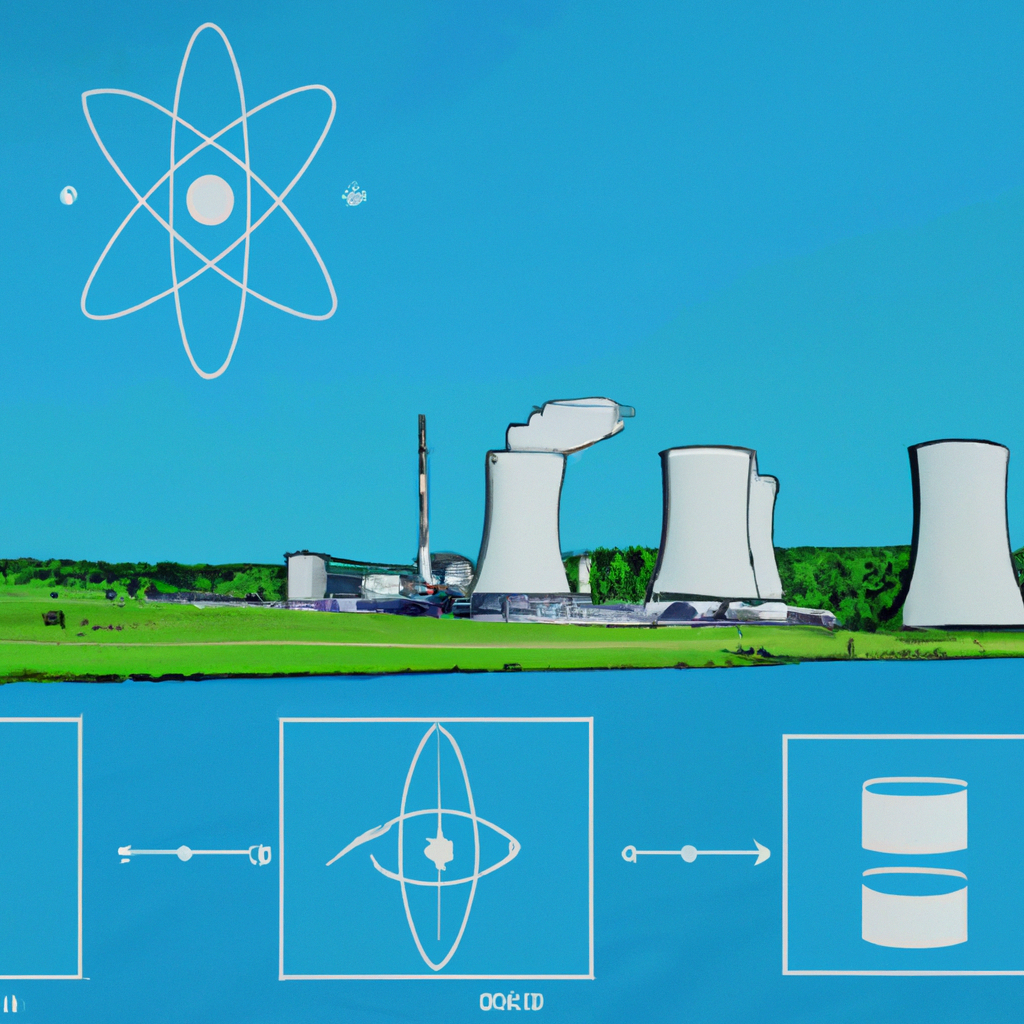Nuclear power plants, also known as nuclear power stations, are facilities that generate electricity through the process of nuclear power generation. This process involves the use of nuclear reactors to produce heat, which is then used to produce steam that powers turbines, ultimately generating electricity. In this article, we will take a comprehensive look at how nuclear power plants work, highlighting the various stages of the nuclear power plant process and the components of a nuclear reactor.
The Nuclear Reactor
The nuclear reactor is the heart of a nuclear power plant. It is a device that contains and controls nuclear reactions and produces heat, which is used to generate electricity. Nuclear reactors use uranium as fuel, which is a radioactive element that undergoes nuclear fission. Nuclear fission is the process of splitting the nucleus of an atom into two or more smaller nuclei, releasing a large amount of energy in the process.
Control rods are used to regulate the rate at which nuclear fission reactions occur in the reactor. These rods absorb neutrons, which are particles that are released during nuclear fission and are responsible for continuing the process. By absorbing neutrons, control rods prevent the reactor from overheating and causing a nuclear meltdown.
The Nuclear Power Plant Process
The nuclear power plant process involves several stages, each of which plays a critical role in the generation of electricity. These stages include:
1. Fuel Preparation
The fuel used in nuclear reactors is uranium, which is mined from the earth. The uranium is then enriched to increase the concentration of the isotope uranium-235, which is the fuel used in nuclear reactors. Once enriched, the uranium is formed into pellets and loaded into fuel rods, which are then inserted into the nuclear reactor.
2. Nuclear Fission
Once the fuel rods are loaded into the nuclear reactor, the reactor is started up, and nuclear fission reactions begin to occur. These reactions release a large amount of heat, which is used to heat water and produce steam.
3. Steam Generation
The heat produced by the nuclear fission reactions is used to heat water, which is circulated through the reactor and into a steam generator. In the steam generator, the hot water is used to produce steam, which is then used to power turbines.
4. Turbine Operation
The steam produced by the steam generator is used to power turbines, which generate electricity. As the steam passes through the turbines, it causes them to spin, which in turn drives generators that produce electricity.
5. Cooling
Once the steam has passed through the turbines, it is cooled back into water and returned to the steam generator to be used again. Cooling is a critical aspect of the nuclear power plant process, as it prevents the reactor from overheating and causing a meltdown.
Conclusion
Nuclear power plants are a critical source of energy for many countries around the world. The nuclear power plant process is complex and involves several stages, each of which plays a critical role in the generation of electricity. The nuclear reactor is the heart of the nuclear power plant, using uranium as fuel to produce heat, which is used to generate steam and ultimately electricity. Control rods are used to regulate the rate at which nuclear fission reactions occur in the reactor, preventing it from overheating and causing a meltdown. Overall, nuclear power plants are a critical component of our energy infrastructure, providing a reliable and sustainable source of electricity for millions of people around the world.







